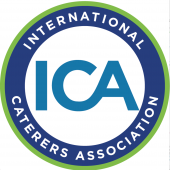With the catering landscape more competitive than ever before, what are you doing to ensure your events stand out? This past June, International Caterers Association members learned the key to distinction during the monthly educational webinar: Creating an Alliance Between Catering and Design.
The JDK Group Catering & Events, a Harrisburg-based company that serves central Pennsylvania and the surrounding areas, brought their A-team to share exactly how they create catering experiences that differentiate them from the crowd—ultimately leading to more satisfied clients, a stellar portfolio, and an easier sales process.
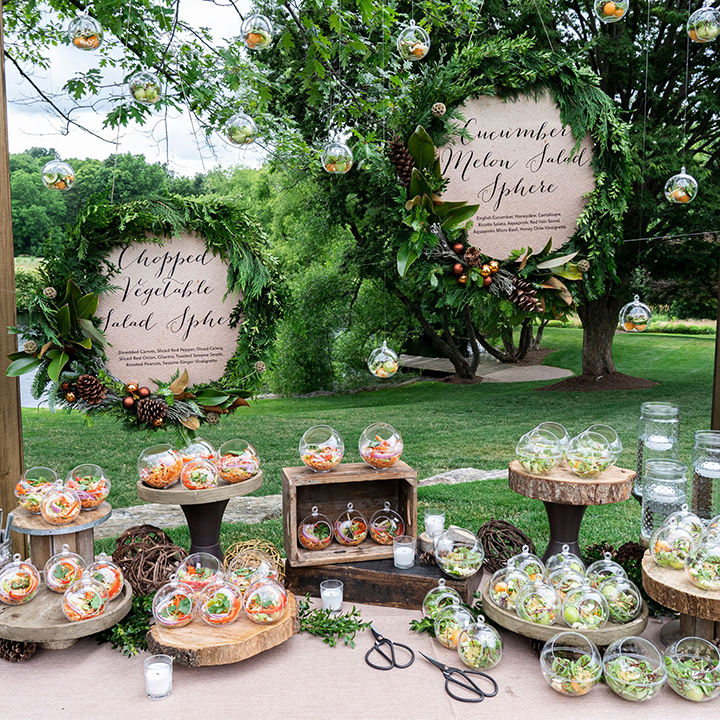
Custom signage is a great way to bring a touch of creativity to any food station. Photos courtesy International Caterers Association/The JDK Group Catering & Events
In this article, Steve Sanchez (President), Colton Staver (Director of Floral & Design), and Brad Snyder (Event Specialist) share some incredible tips.
Start with the creative process
When catering and design teams work together as one during the creative process, it’s easier to cultivate impressive experiences because you’re truly showcasing every possibility to a potential client.
Using a well-known framework, The JDK Group team has tweaked it for their catering and event planning process. Here’s how:
Preparation
During this phase, the team focuses on brainstorming and getting to know the client. One tip is to ask them for potentially “non-traditional” inspiration. This could be a request for images of their home or even a list of their favorite furniture or clothing stores. This helps the creative team peel back the layers and unveil the client’s ideal aesthetic, which provides more inspiration for the design and menu.
Taking this, they channel all five senses, asking themselves:
-
What are the guests going to see as they walk in? What sights will surprise them throughout the event?
-
What are they going to touch and feel?
-
What are they going to smell and taste beyond the menu?
-
What are they hearing in addition to the DJ? How can sound be immersive?
Tools they use for inspiration include Pinterest and TikTok. The team shared that if you’re not on TikTok for inspiration, you’re likely missing the trends and becoming stale.
Using these brainstorming and inspiration techniques, the team puts together three mood boards that exude the vibe, aesthetic, design elements, and artful dishes the client can anticipate.
After the client chooses which is best suited, the process moves to the incubation and illumination phases.
Incubation
This phase is about letting the vision marinate and seeing what sparks before putting the whole vision together on paper (and in the form of a proposal).
Illumination
Staver described the illumination phase as “when [those ideas, that vision] moves from your subconscious to the forefront of your mind. It’s putting your thoughts on the paper, doing sketches, that kind of thing—collecting that inspiration to your proposed vision.”
This phase is about putting together the:
-
Internal vs. external labor required with cost
-
Delivery and execution on-site with labor cost
-
Product and design cost Then, they put together a realistic budget, which leads to the evaluation phase.
Evaluation is the phase where you critically examine your idea and weigh it against other options. The main questions are:
-
Do you have a proposed budget from the client?
-
Is the idea lining up to the cost of the design you envisioned?
-
Do you have a design division in-house right now or is that a department your company is interested in launching?
The answers to these questions will then lead to how and what you show the client in the proposal. The JDK Group team mentioned that if you’re just starting out with elevating design elements, you may need to discount for a bit as you build your portfolio— and that’s okay!
From here, you can either tweak things to align better with the client’s budget or get everything ready to send.
Verification
The final phase, verification, is how the idea will be presented to the client. While location may put restrictions on how you’re able to do this, it’s always recommended to present in person with some special touch, like a welcome beverage or a gift to take home. Better yet, both. Have the proposal be an experience in itself, and you’re more likely to build trust and get that ‘yes’!
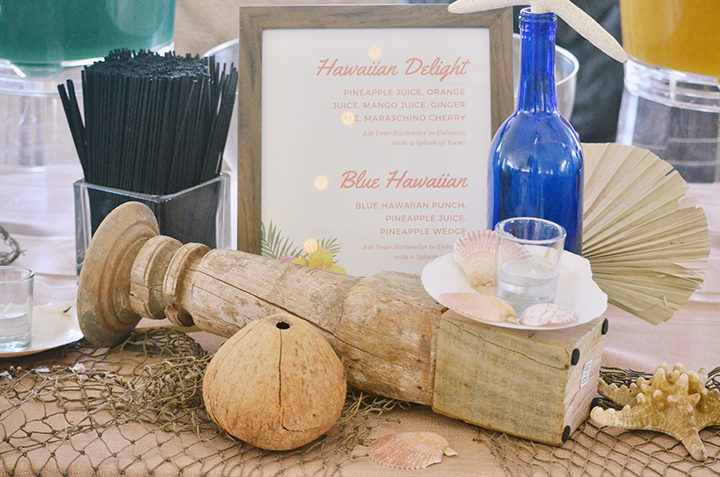
Welcome beverages can set the tone and serve as a focal point for your event.
From afar, you can still do things like send gifts to elevate the proposal delivery.
Finally, to close the business, don’t leave the meeting or email with an opportunity for the client to give an open-ended response. You want to ask things such as:
-
Does this align with your vision?
-
What are your next steps?
-
Would you like to move forward?
From there, hopefully, you’ll land the deal after all this careful consideration of their goals, vision, and your creative capabilities!
Tips for elevating basic to bougie
When going through the process above, the catering and design teams at The JDK Group work together to elevate from basic to bougie every time. This is how you’re able to maximize your revenue and create an irresistible portfolio as a company.
1. Qualify & classify the event
Every event has its place on the catering spectrum. To determine where your client’s event falls, start by asking key questions about the nature of the event, its scale, and the budget. Remember, initial budget estimates might not reflect the true potential, so digging deeper can reveal unexpected opportunities.
2. Quantify your budget
The key to truly elevating experiences is a piece that can be hard to manage: the budget. The JDK Group team asks the client for budgets upfront, sharing that the team is able to dream up the world—but, if they’re unaware of budget, it may simply end up being a tease if it is outside the scope.
When having budget conversations, if they won’t give a number, ask quantifying questions like, “Are you comfortable with between $6–10K for design, or are you more comfortable with $1–3K for design?” This will help provide a baseline as you start the creative process.
3. Elevate the execution
Then, do what you can to truly elevate the cuisine through presentation. That’s where the marriage of catering and design really shines. A few examples The JDK Group shared were:
-
Dressing the part: staff uniforms Your staff’s appearance can be an extension of your event’s theme. From elegant tailcoat suits for a haunted mansion theme to tropical shirts for a relaxed pool party, staff uniforms can help set the ambiance.
-
Your canvas: go beyond passing trays Passing trays can become a canvas for your culinary creativity—not simply the vessel. Break away from tradition with unique displays, such as shrimp cocktails served with syringes of cocktail sauce, adult Capri Suns, or a welcome beverage board held by staff at the entrance for a playful twist.
-
Welcome beverages: more than just drinks Welcome beverages are more than a mere thirst quencher. They set the tone and serve as a focal point for your event. Explore innovative ideas like a champagne wall that doubles as an entrance display.
-
Food station design: a way to get guests talking Picture this: a tomato soup station served from elegant teapots, a charcuterie board featuring local products and creative presentation, or a hanging pasta station that tells a story beyond the food. It’s about capturing attention, sparking conversations among guests and with the team, and ultimately, leaving a lasting impression.
-
Add value: upsell in entertainment Why stop at catering when you can offer a full-service experience? By coordinating outside vendors and integrating their services seamlessly, you provide clients with a onestop solution. Picture horse-drawn carriages, live ice carvers, or muralists who bring events to life with their artistry. You can also propose activations like flower bouquet bars or make-your-own candle stations.
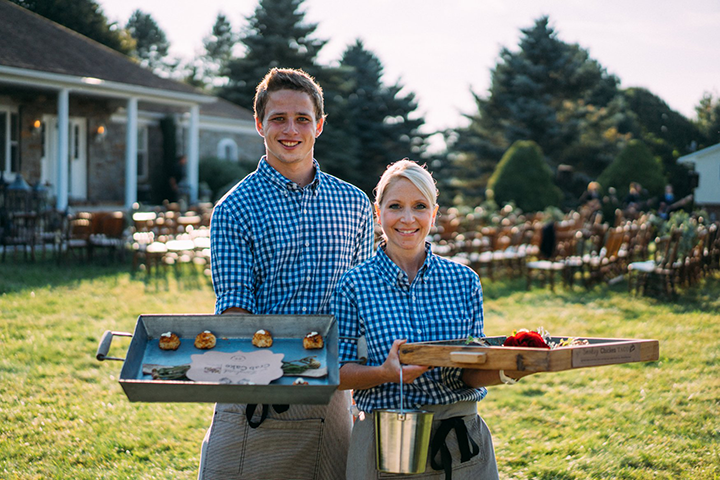
Your staff’s appearance can be an extension of your event’s theme. Photo courtesy International Caterers Association/The JDK Group Catering & Events
These added touches elevate the experience and showcase your commitment to creating memorable moments that keep guests talking. And you know what that means—referrals!
Putting a unique event protocol in place for consistency
When you’re taking design and experience to this level, you need to treat it with a more rigid approach. The JDK Group team deploys a “Unique Event Protocol” for events that are above and beyond standard.
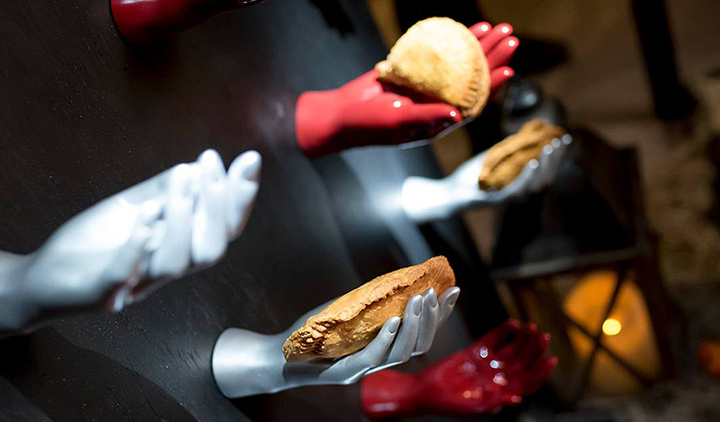
One of the stations that The JDK Group Catering & Events designed incorporated a wall of hands offering empanadas to guests. Photo courtesy the International Caterers Association/The JDK Group Catering & Events
This could mean:
-
Events with over 250 guests
-
Events with a per-head cost of $400+
-
Logistically complicated events like a five-course dinner or non-typical station design
-
An event like a white-glove dinner at the governor’s mansion with VIP guests
-
Unique themes or unusual/custom food items, etc.
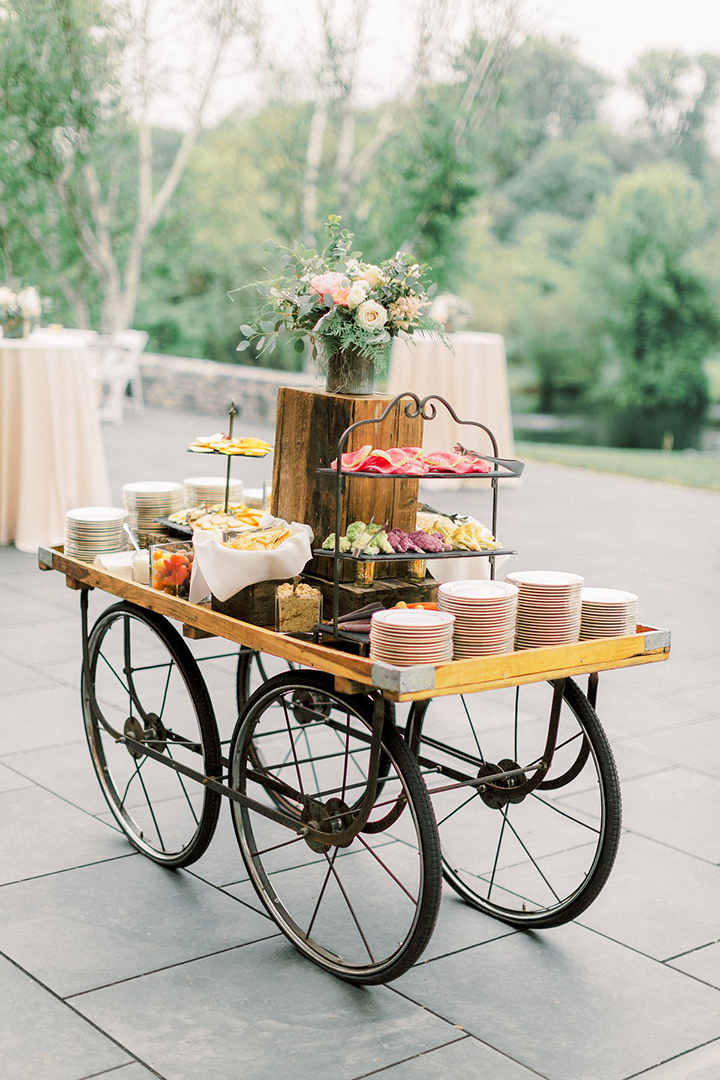
Leave a lasting impression with guests through the use of creative food stations. Photo courtesy International Caterers Association/The JDK Group Catering & Events
For these events, The JDK Group ensures they have the following set up:
-
Kitchen meeting
-
Production and logistics meeting
-
Site visit and final logistics review
-
Departmental meetings as needed
-
Debrief meeting
The unique part about this is that every team is involved in every step. The design and the kitchen team are working together to cultivate success.
Snyder shared, “We want to make sure that we’re not missing anything, and we want to get all of those teams involved in the process. We also want to make sure that they’re on that site visit so that they can walk through and touch everything and make sure that all of their questions are answered as well.”
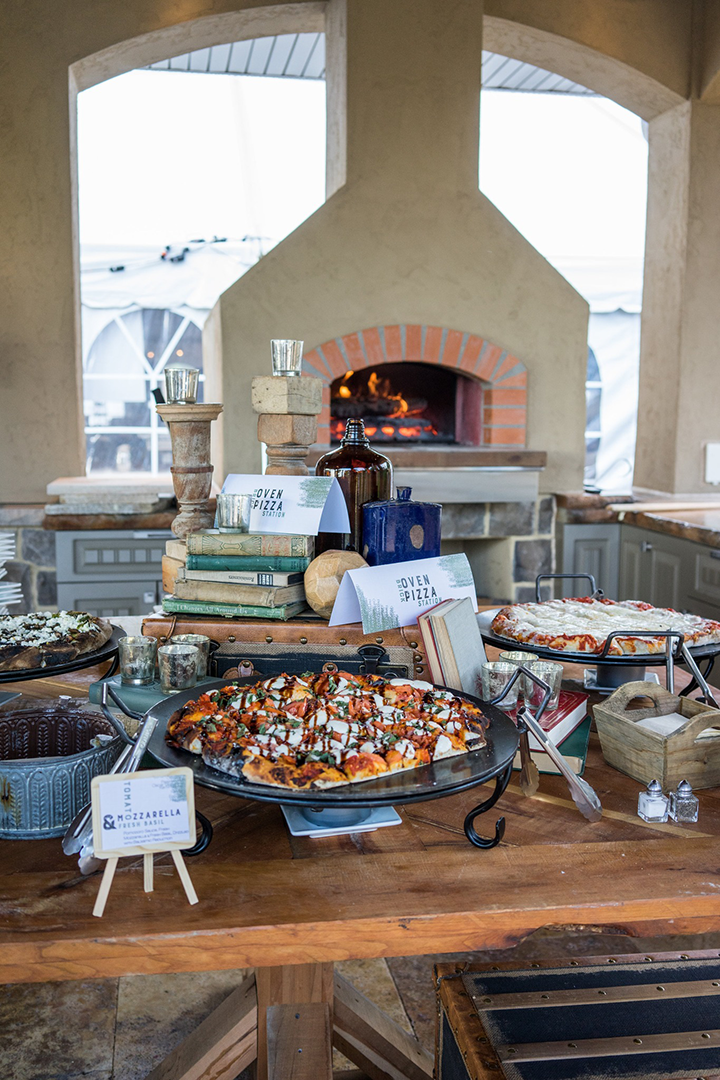
Creative food stations should be about capturing attention and sparking conversations. Photo courtesy International Caterers Association/The JDK Group Catering & Events
The moral of the story? In the world of catering, it’s not just about the food—it’s about crafting experiences that resonate with your clients and their guests. By mastering the art of design, presentation, and collaboration, you can transform any event into a truly unforgettable affair.
The JDK Group is a proud member of the ICA. Every month, the ICA organizes educational roundtables like these to inspire, brainstorm, and educate about industry trends. For more information on how to join the ICA and to be notified of future catering industry webinars and education opportunities, visit www.internationalcaterers.org.


